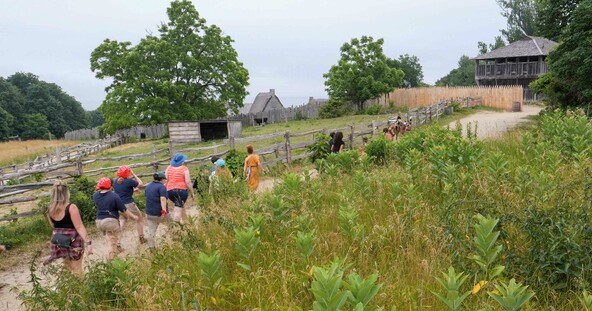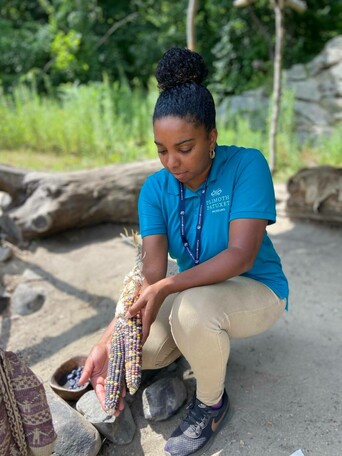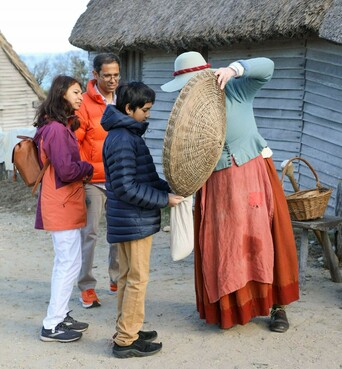
Presenting the Story of Two Cultures
Plimoth Patuxet Museums was incorporated in 1947 as "a memorial to the Pilgrim Fathers" and for the "historical education of the public with respect to the struggles of the early settlers, the expansion of the settlement and the influence of the Pilgrim Fathers throughout the world."
From the start, Harry Hornblower, the Museum’s founder, knew that the comprehensive and accurate representation of 17th-century Plymouth Colony would require the exhibition and interpretation of both Indigenous and English cultures.
He understood that the transformation of New England in the 1600s was the result of day-to-day interactions between the Indigenous People and the Pilgrims —sometimes working in collaboration and sometimes living in conflict.

Harry Hornblower’s expansive and visionary approach to the early Colonial period began with the Pilgrim Village and Mayflower II, then led to the creation of a Native Studies program in the early seventies.
Plimoth Patuxet's programs and exhibits are the expression of an educational organization that is interested in telling the stories of all the people who lived in Colonial Plymouth, or Patuxet, as it was called by Native People.
The Museum is deeply committed to recovering and interpreting these historic voices so that guests can experience more fully the complex and richly nuanced portrait of life in the 1600s.

The 17th-Century English Village affords a glimpse into the worldview, faith, and lifeways of the Pilgrims; Mayflower II enables guests to imagine what the harrowing journey of 1620 may have been like; and the Patuxet Homesite offers an experience of the traditions, lifeways, and culture of the Indigenous People of this region from the unique cultural perspective of Native museum professionals.
Plimoth Patuxet provides the historical context to explore the world produced by this cultural fusion in southern New England. It is a world that we have inherited.
Plimoth Patuxet staff represent the historical as well as
contemporary diversity of American culture.
The Museum hopes that by listening to the voices from both the Colonial and the Indigenous perspective, we will inspire not only a deeper understanding of our Nation's past but also modern contemplation on today’s multicultural America and the contributions of our ancestors - indigenous and immigrant.